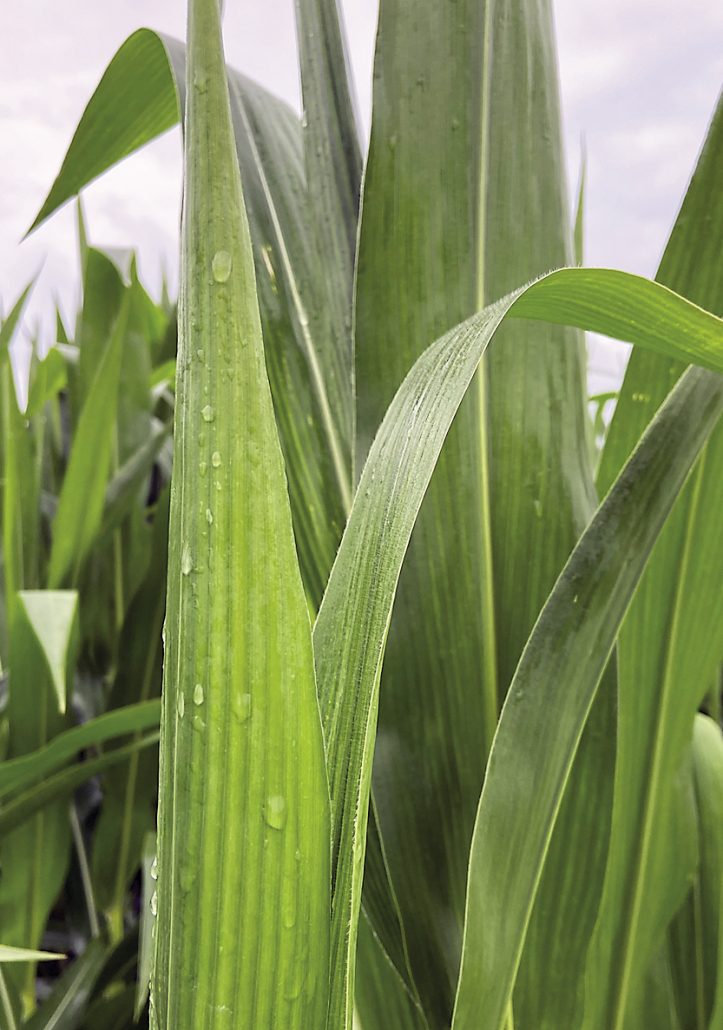
July rains have helped, but much more needed as drought conditions persist
By Per Peterson
With little to no rain in the forecast, area crops will continue to feel the stress. However, considering parts of southwest Minnesota, including Lyon County, are still under severe drought conditions, corn and soybeans are continuing to hold their own.
“It’s surprising, things have been looking pretty good overall,” said Liz Stahl, University of Minnesota Extension crops educator. “If you’re not on sandy ground or on a hilltop, a lot of the corn is holding up and hanging in there. We’ve still got a lot of potential out there.”
Currie-area farmer Mark Gervais backed up Stahl, saying his crops are fairing quite well, considering the circumstances.
“Things look pretty good actually,” said Gervais, who farms east of Currie. “The beans are coming around, the corn actually has done pretty well; we had just enough rain that it kind of kept things moving along.”
Stahl said recent rains have helped matters, but are nowhere near close to what farmers in the region need to calm their concerns.
After an extremely dry June — Tracy received just over 1 inch of rain for the entire month — Mother Nature has been in more of a giving mood this month. Almost one-half inch of rain fell in Tracy on July 6, and four days later Tracy received one-half inch of rain. Another tenth fell on July 13, and another one-half inch fell in a steady rain on July 14.
“It helps, but it surely doesn’t get us out of the drought for sure,” Stahl said.
A good 4 to 5 inches of rain, Stahl said, would be enough for this year’s crop to catch up to long-term averages.
“It’s not something you want to get all at once, because you could have run-off issues,” Stahl said. “And you don’t want severe weather. When you talk about water use from the crop, a lot of people talk about an inch a week.”
July is typically the time when crops use the most moisture, Stahl said. Crops should be able to withstand another stretch of dry weather, as long temps stay relatively normal during pollination. However, this week’s forecast in the local area calls for mostly sunny skies with temperatures in the 90s.
“It’s better to be in the 70s for sure, and even the 80s — it’s better than being in the 90s,” Stahl said. “When you’re in the 90s, that’s more stress, more moisture use in the crop. Water use in soybeans is really high right now.”
Gervais said average rains for the rest of the growing season would equate to a pretty good crop, but he’s not thrilled about the forecast.
“With the next couple weeks looking as dry as they are, I don’t know what it’s going to look like,” he said. “It won’t be the end of the world — close to 90 — if we had some moisture to go along with it, we’d be alright.”
Most of the recent rainfall has fallen south of the Tracy area. Gervais said he received one-half inch on July 14, but has heard other areas to the south have been blessed with much more than that.
“It’s been really spotty,” said Gervais. “As you go south of our farm, they’ve been getting consistently better rains, but you go north and north of Tracy, they’re even drier than we’ve been. We’re going to need at least average rains, if not better, to make it through the heat. In June, we kind of sucked a lot of our reserves out that we usually use this time of year.”
Stahl said moisture reserves in area fields are well below historical averages.
According to the latest crop report from the United States Department of Agriculture, topsoil moisture supplies were rated 31% very short, 47% short, 22% adequate and 0% surplus. Subsoil moisture supplies were rated 28% very short, 51% short, 21% adequate and 0% surplus.
Corn silking reached 62%, one day behind last year but 5 days ahead of the average. Corn condition was at 42% good to excellent. Soybeans blooming reached 79%, equal to last year but one week ahead of average. Soybean setting pods was 26%, five days ahead of the average. Soybean condition declined to 43% good to excellent, compared to the previous week’s 45%.
Soybean canopies are not as robust as they usually are at the time of year, Stahl said, but it’s not time to panic yet for soybeans.
“It’s anybody’s guess what the yield impact will be,” Stahl said of the current conditions. “What’s the rest of the year going to look like? But we’ve shaved off yield for corn for sure, and probably soybeans, too. The really important time will be in August; hopefully we can get enough moisture to keep things going and finish the crop off.”
Minnesota last week entered the drought warning stage.
“We seem to lose the crop about 10 times a year and we still combine something,” Gervais joked. “I’m not writing things off yet. We’ll do a little fungicide on some beans, still hoping for a good rain yet.”
